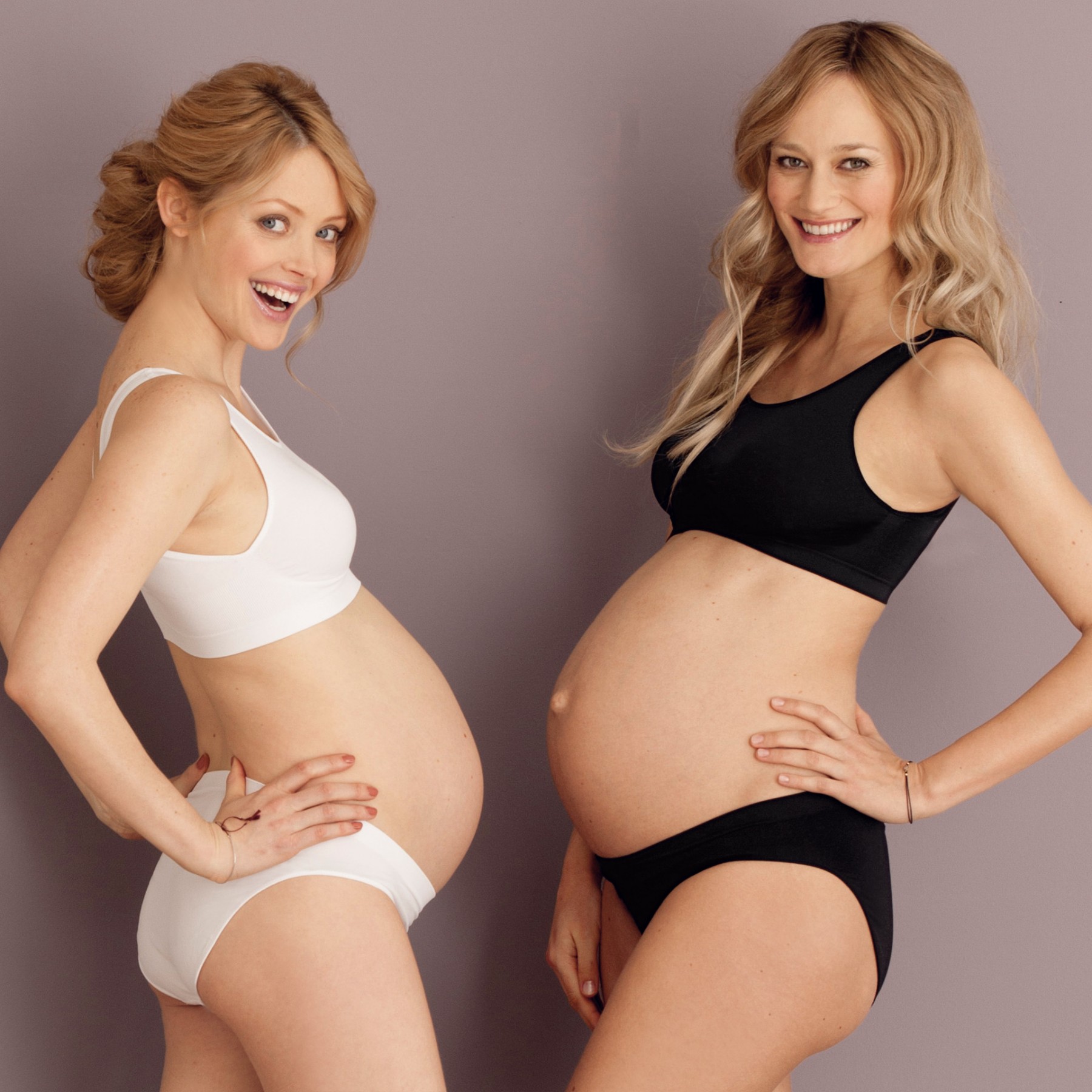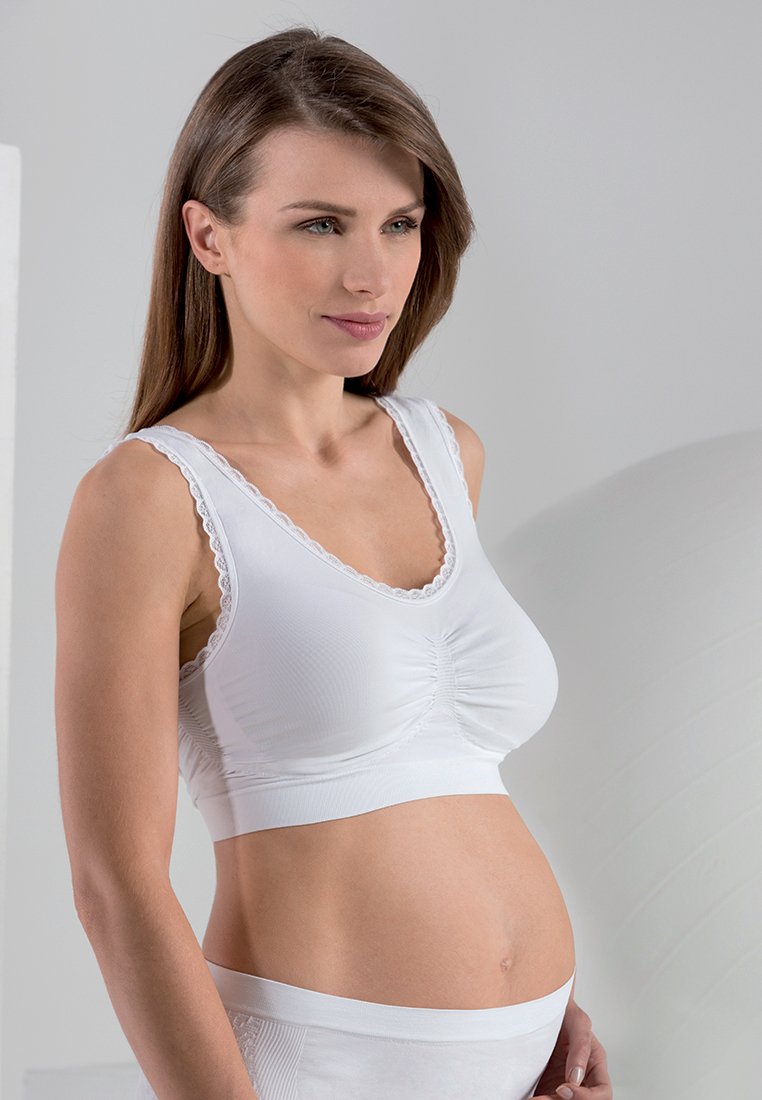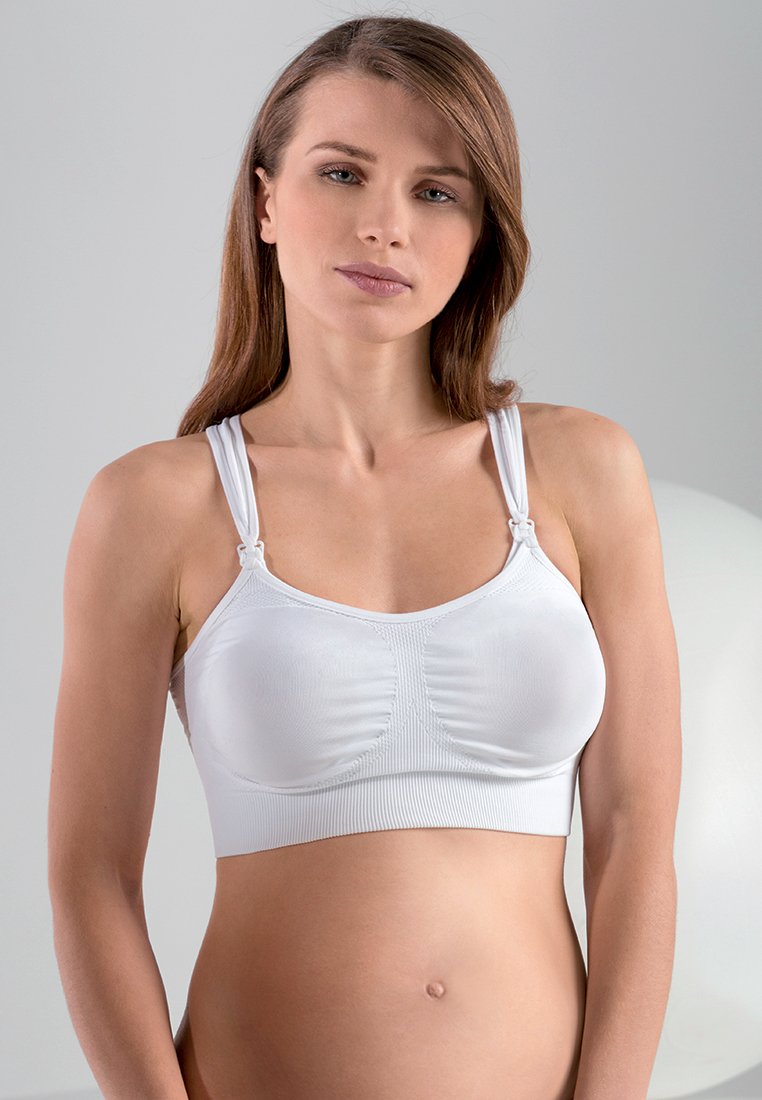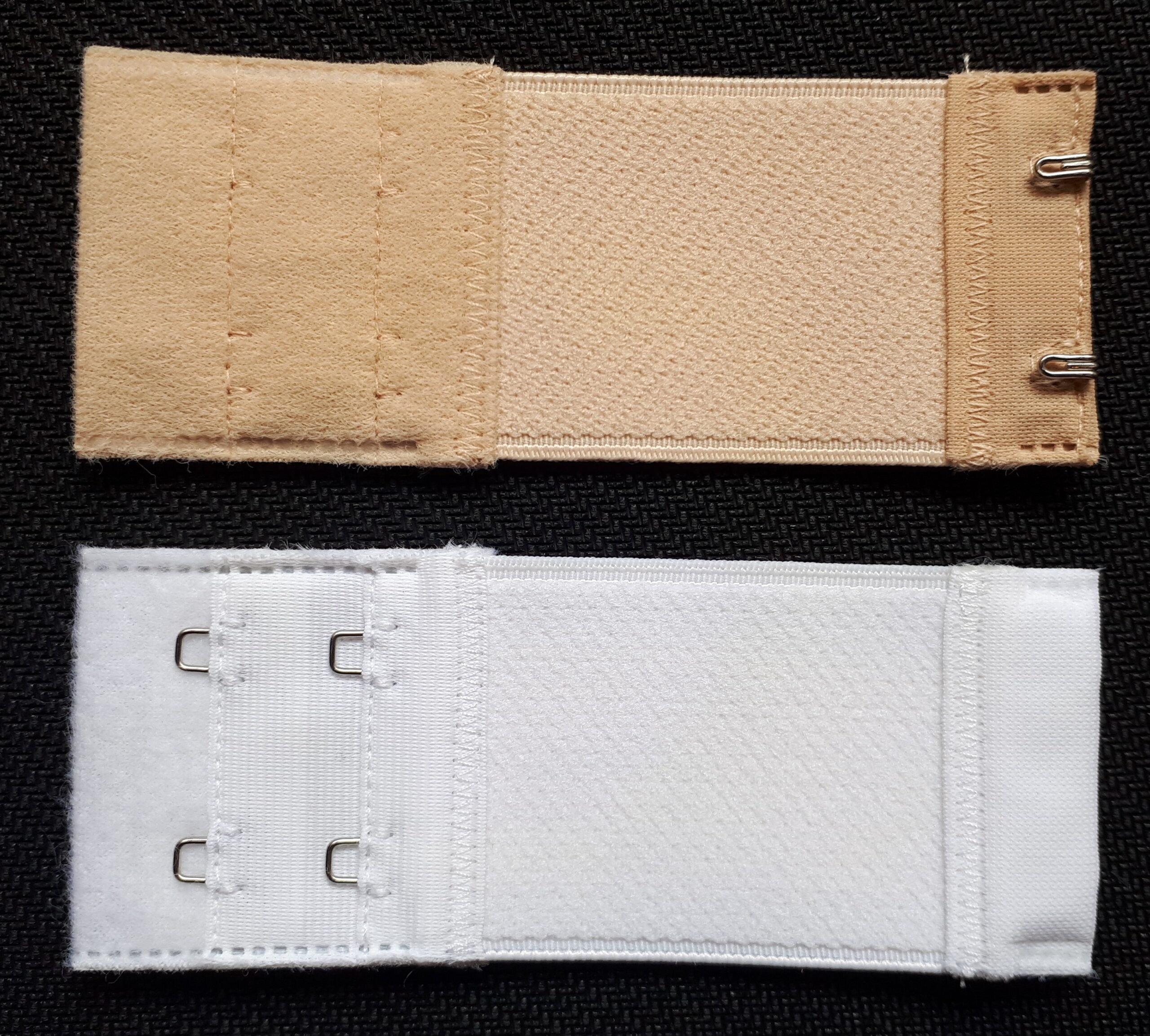Bras
Maternity and Nursing Bras made with seamless technology.
Soft, elasticated yarn which is gentle for your skin.
High quality from Germany and Italy.
The history of the Bra:
A bra, short for brassiere is a form-fitting undergarment designed to support or cover the wearer’s breasts…[expander_maker id=”1″ more=”See the story” less=”Hide this”]
Bras are designed for a variety of purposes, including enhancing a woman’s breast size, creating cleavage or for other aesthetic, fashion or more practical considerations.
Swimsuits, camisoles, and backless dresses may have built-in breast support.
Nursing bras are designed to facilitate breastfeeding.
Some women have a medical and surgical need for brassieres, but most women wear them for fashion or cultural reasons.
The history of bras is inextricably intertwined with the social history of the status of women, including the evolution of fashion and changing views of the female body.
Women have used a variety of garments and devices to cover, restrain, reveal, or modify the appearance of breasts.
Bra- or bikini-like garments are depicted in some female athletes of the Minoan civilization in the 14th century BC.
From the 14th century onward, the undergarments of wealthier women in the Western world were dominated by the corset, which supported the breasts by transferring their weight to the rib cage.
Corsets varied in length from short ones which only supported the bust to longer ones also used to shape the waist.
In the latter part of the 19th century, women experimented with various alternatives such as splitting the corset into a girdle-like restraining device for the lower torso and transferring the upper part to devices suspended from the shoulder.
In the late 19th century, bras replaced the corset as the most widely used means of breast support.
By the early 20th century, garments more closely resembling contemporary bras had emerged, although large-scale commercial production did not occur until the 1930-s.
Since then bras have replaced corsets (although some women prefer camisoles) and some, as well, go without.
The metal shortages of World War II encouraged the end of the corset.
By the time the war ended, most fashion-conscious women in Europe and North America were wearing bras.
From there the bra was adopted by women in Asia, Africa, and Latin America, although we have no information about what arrangements, if any, immediately preceded the adoption of the bra across Asia, Africa and Latin America.
During the 20th century, greater emphasis has been given to the fashion aspects of bras.[/expander_maker]
Showing all 4 results



